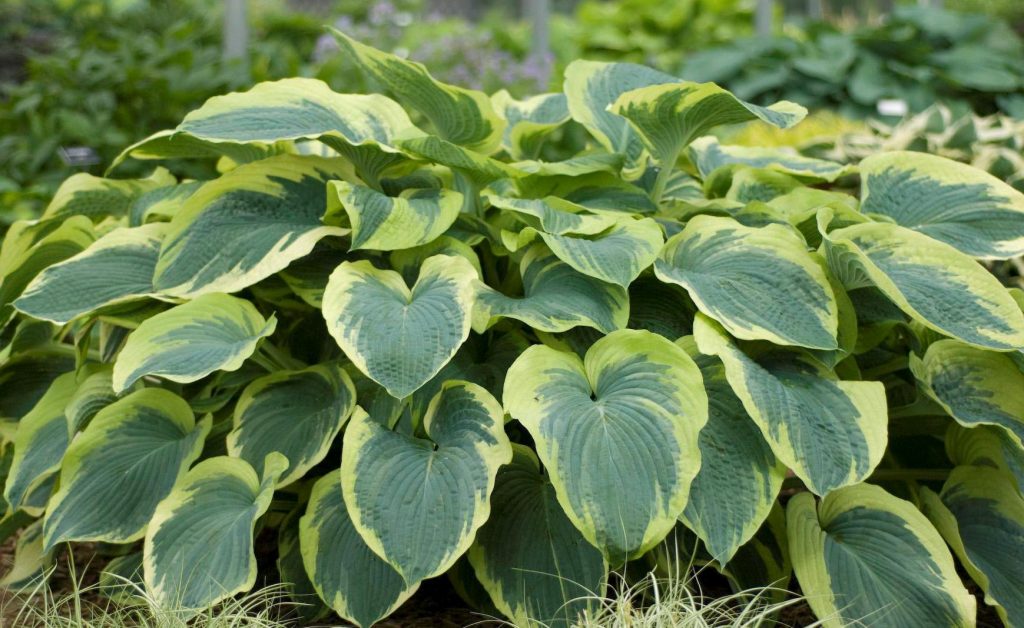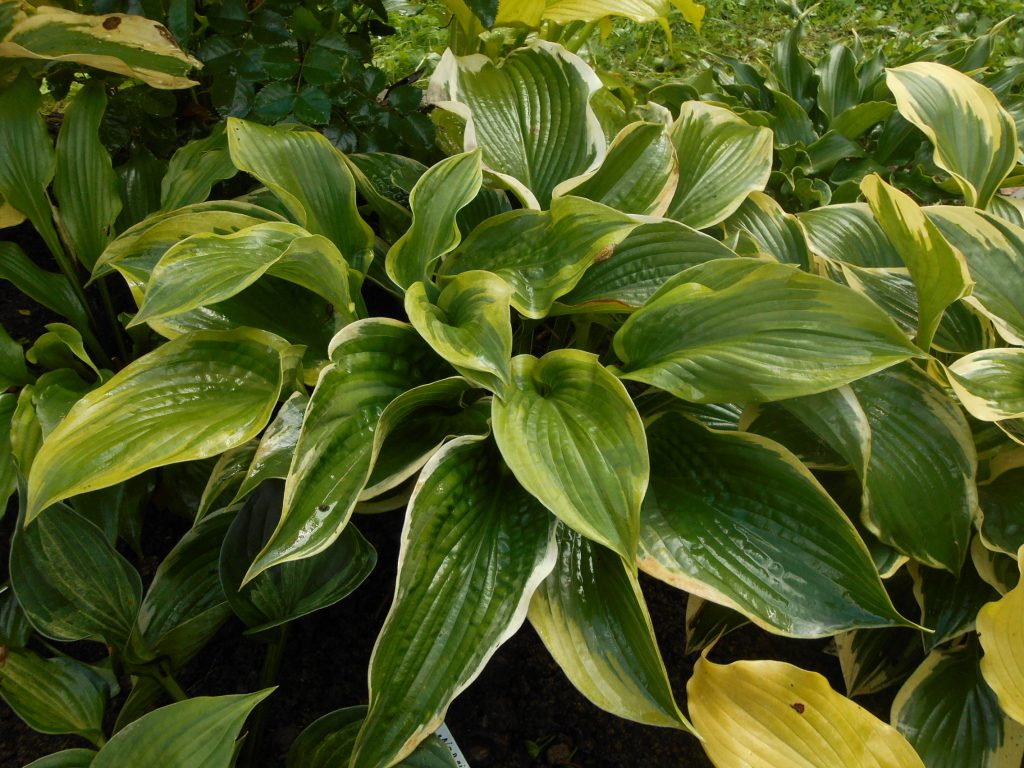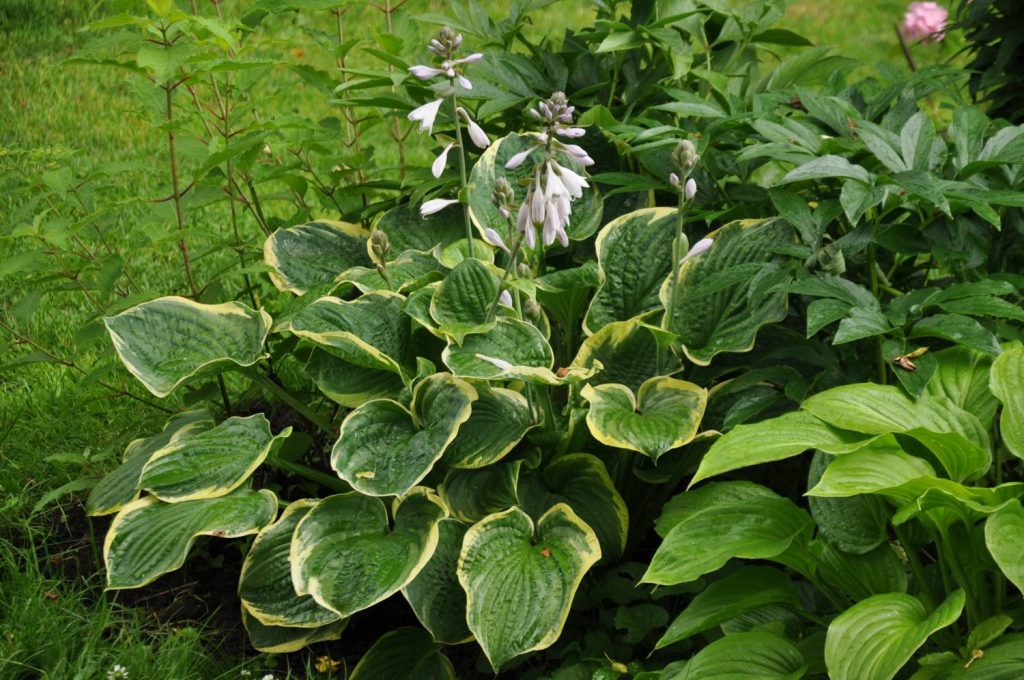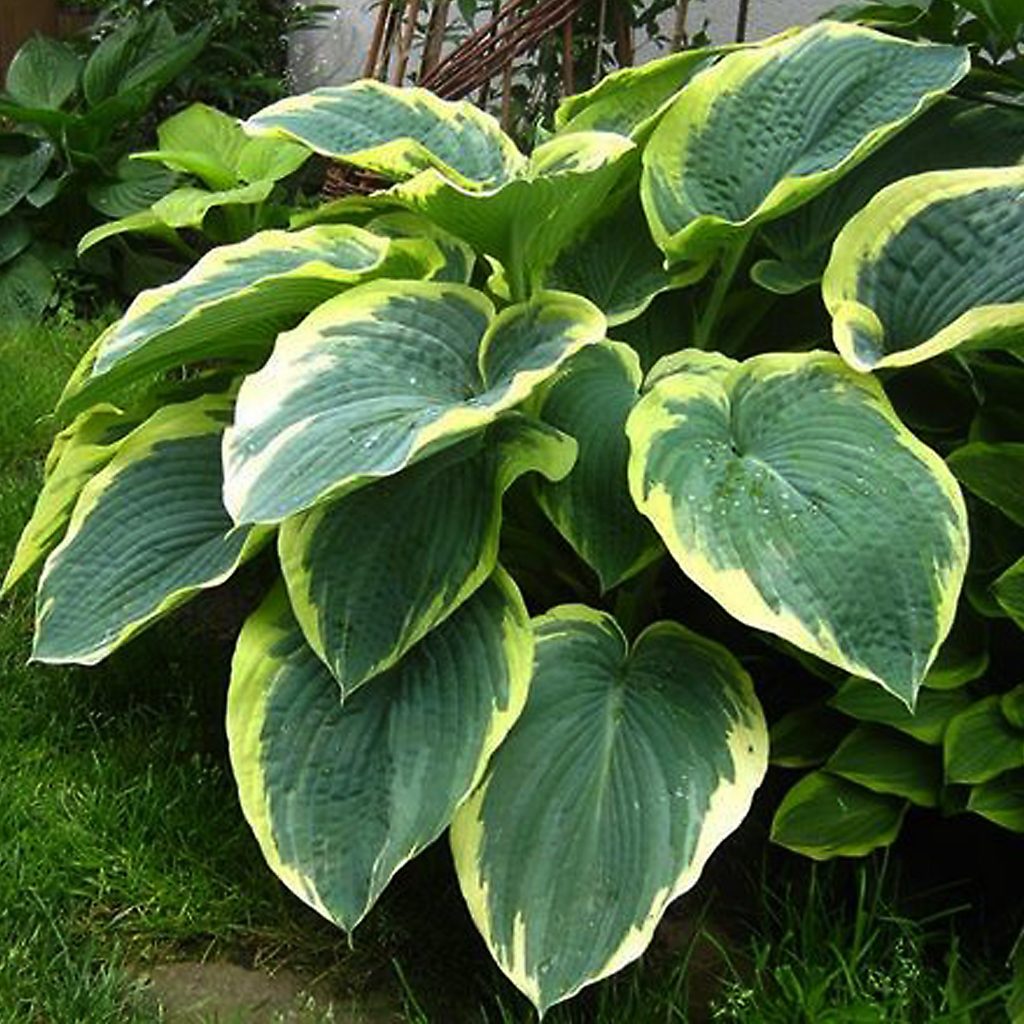Hosta American Halo - Landscaping Applications
Hosta American Halo is a hybrid variety known since 1999. The translation of the name is "American halo" (the light border on the leaves really resembles a luminous frame). This variety is a Northern Halo sport with similar characteristics.

Hosta american halo
Description of the plant
Function American Halo is an ornamental perennial from the Asparagus family. It grows in the form of a lush, domed bush. It reaches a height of 50-60 cm (sometimes up to 80 cm). Higher peduncles - up to 1m.
Hosta has bushy leaves (up to 30 cm long, 25-28 cm wide) with an original corrugated-crimped surface. In the center - green with a bluish tint, along the edges - decorated with a creamy yellow border. Bell-shaped flowers, white. Funkia blooms from mid-July to late August.
Landing features
The decorativeness of the funky is most fully manifested in a slightly shaded place. It can also grow in open space and in full shade. However, it should not be planted in that part of the garden where the sun beats mercilessly for most of the day - the leaves of the plant will shrink and fade. The ideal soil for hostas is a light loam with a neutral reaction. In the sandy soil, you need to add a little clay, as well as peat, compost or other organic matter.
Do not plant American Halo in places of stagnant moisture or deep groundwater. If planting is planned near a reservoir, the plant is planted on a non-flooded shore, an embankment and good drainage are arranged.
The planting hole is dug up to a depth of 80-100 cm. The first layer is covered with crushed stone or broken brick, and then filled with a third of a mixture of earth, compost and peat (you can add mineral fertilizers). The bush is transferred along with a lump, watered, covered with a substrate and tamped well.
The root collar of the funkii should be 4-6 cm deep, but no more.
Care
Host American Halo is unpretentious in terms of conditions and care. It is resistant to drought, frost, diseases and pests, loves moisture, but waterlogging can destroy it. The flower reacts gratefully to moderate feeding.

Hosta american halo photo
Watering rules
- The plant needs regular watering if the weather is dry. Usually it is carried out 2 times a week.
- The soil should be saturated with moisture 30-40 cm deep.
- For an adult bush, 15-20 liters of water are used.
- It is necessary to water at the root, and not over the foliage (in the latter case, burns, fungal diseases, loss of wax plaque may occur).
- Evening watering can attract slugs and snails to the plant, so the procedure is best done in the morning (before 10-11 hours).
Top dressing
The first feeding is carried out when planting a plant - fertilizers are placed in the planting pit. In autumn and spring, they mulch with compost and peat, providing nutrients and simplifying maintenance.
Additionally, you can feed the host with mineral complexes, spreading the granules into loosened earth or dissolving in water.
Pruning and preparing for winter
At the end of flowering, dried peduncles are cut off on funkyi. After the leaves turn yellow, the ground part of the plant is cut off to prevent slugs, caterpillars, snails and other pests.
A frost-resistant hosta does not need shelter, but in anticipation of a harsh winter it can be covered with dry foliage (young bushes - with coniferous spruce branches).
Reproduction
Hosta American Halo is propagated by dividing the bush or by cuttings. Judging by the descriptions of gardeners, in both cases the plant takes root quickly.

Hosta american halo
Seed propagation is practically not carried out, since the varietal characteristics of seedlings are often not preserved.
Dividing the bush
The procedure is carried out every 4-6 years, when the bush grows and fully shows varietal characteristics. The plant is dug up and divided into several parts with an equal number of buds and roots. Delenki are planted in the shade in moist soil, at about the same depth at which the bush grew.
Cuttings
A rosette shoot with a "heel" is cut off and the cut is processed with Kornevin. The cuttings are deepened into moist soil in a shady place and covered with a plastic bottle. The earth is regularly moistened, and the "greenhouse" is ventilated. Rooting takes place within a month.
Diseases and pests
| Problem | Symptoms | Prophylaxis | Wrestling |
| Slugs | Irregular holes eaten through the leaves. | Do not water the plant in the evenings; Weld birds to the site; Sprinkle ash and tobacco on the ground under the bushes. | Collect pests by hand. Set up traps (beer traps, planks or stones). Use special drugs (Thunderstorm, Slime-eater). |
| Gray rot | The leaves wither and rot from the tips. | Avoid waterlogging. Disinfect soil, drainage material, garden tools. | Remove damaged parts, treat with an antiseptic. Apply fungicides (Trichodermin, Oxyhom, Mikosan, Topaz). If the disease affects the entire plant, do not send it to compost, but completely burn it. |
Use in landscape design
Due to its original color, shade tolerance and unpretentiousness, the American Halo function is often used in landscape design. It organically fits into oriental-style gardens, looks spectacular by stones and ponds. It is used to create alpine slides, mixborders and flower beds. This flower is an indispensable groundcover for shaded areas.

Hosta american halo description
The function is suitable for framing flower beds and growing live borders. It is in perfect harmony with other host species, peonies, roses, stonecrop, phlox, daylilies. It is often planted in multi-tiered compositions next to higher perennials (pine, herringbone, thuja). In addition, the domed bush with two-colored leaves looks very original on its own - as a tapeworm.

